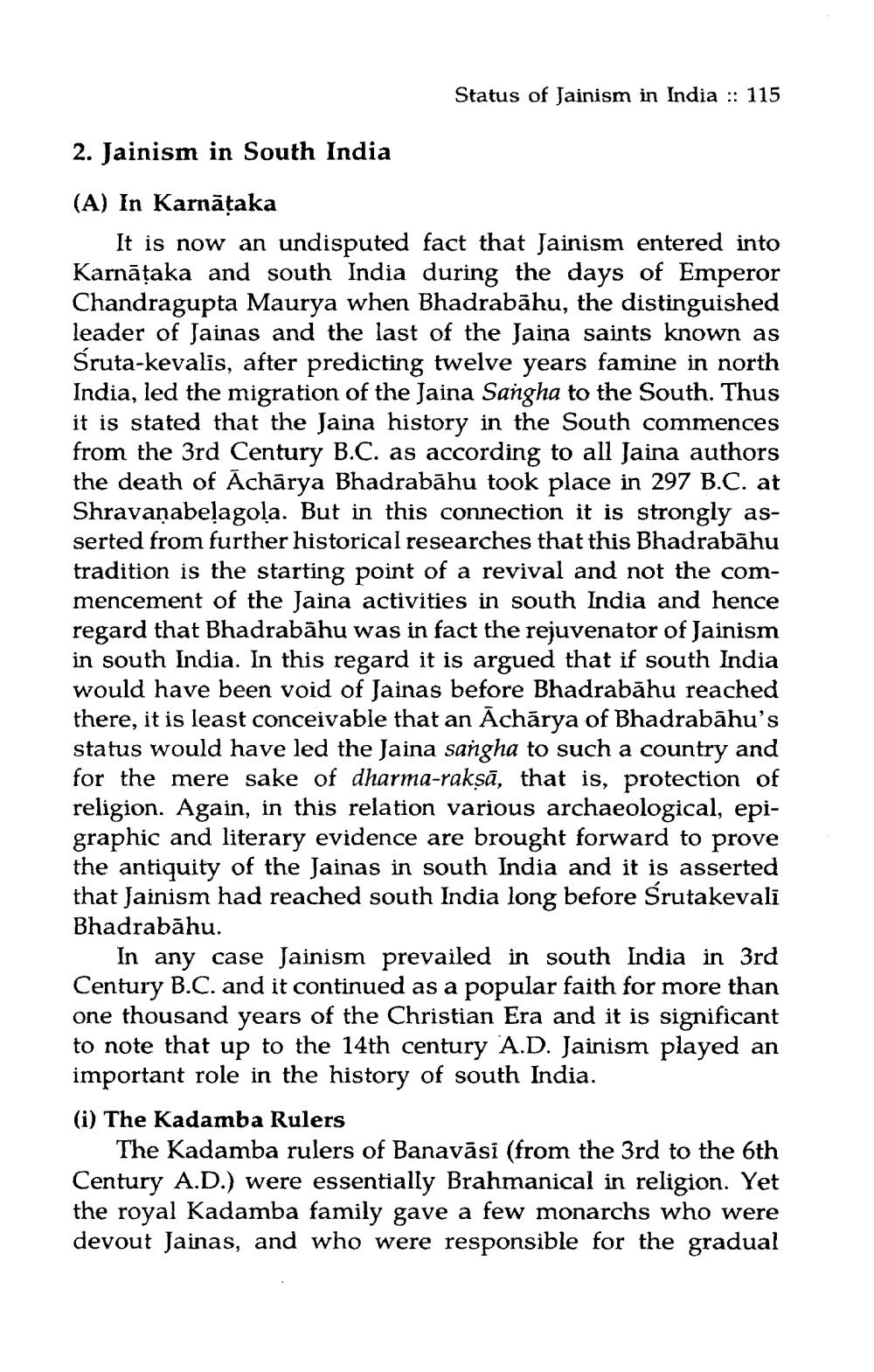________________
Status of Jainism in India :: 115
2. Jainism in South India (A) In Karnātaka
It is now an undisputed fact that Jainism entered into Karnāțaka and south India during the days of Emperor Chandragupta Maurya when Bhadrabāhu, the distinguished leader of Jainas and the last of the Jaina saints known as Sruta-kevalis, after predicting twelve years famine in north India, led the migration of the Jaina Sangha to the South. Thus it is stated that the Jaina history in the South commences from the 3rd Century B.Ç. as according to all Jaina authors the death of Achārya Bhadrabāhu took place in 297 B.C. at Shravanabelagola. But in this connection it is strongly asserted from further historical researches that this Bhadrabāhu tradition is the starting point of a revival and not the commencement of the Jaina activities in south India and hence regard that Bhadrabāhu was in fact the rejuvenator of Jainism in south India. In this regard it is argued that if south India would have been void of Jainas before Bhadrabāhu reached there, it is least conceivable that an Acharya of Bhadrabāhu's status would have led the Jaina sangha to such a country and for the mere sake of dharma-raksā, that is, protection of religion. Again, in this relation various archaeological, epigraphic and literary evidence are brought forward to prove the antiquity of the Jainas in south India and it is asserted that Jainism had reached south India long before Srutakevali Bhadrabāhu.
In any case Jainism prevailed in south India in 3rd Century B.C. and it continued as a popular faith for more than one thousand years of the Christian Era and it is significant to note that up to the 14th century A.D. Jainism played an important role in the history of south India. (i) The Kadamba Rulers
The Kadamba rulers of Banavāsi (from the 3rd to the 6th Century A.D.) were essentially Brahmanical in religion. Yet the royal Kadamba family gave a few monarchs who were devout Jainas, and who were responsible for the gradual




